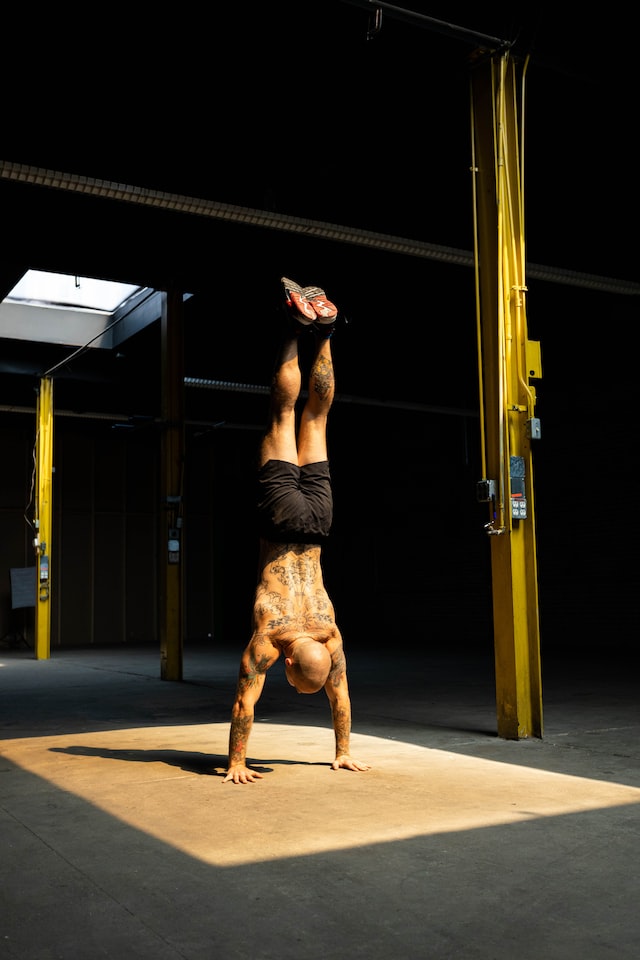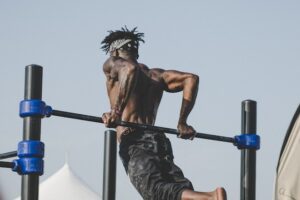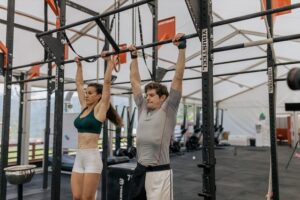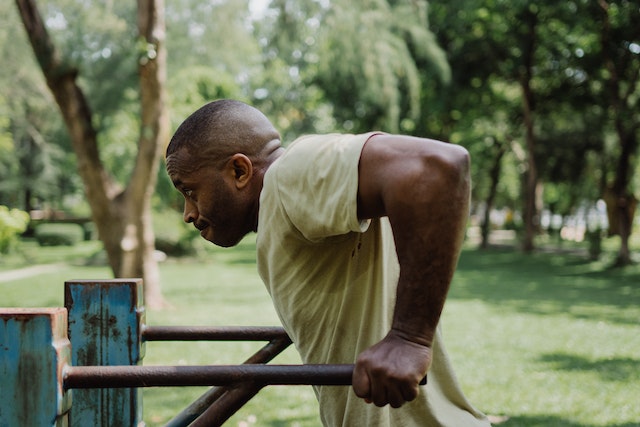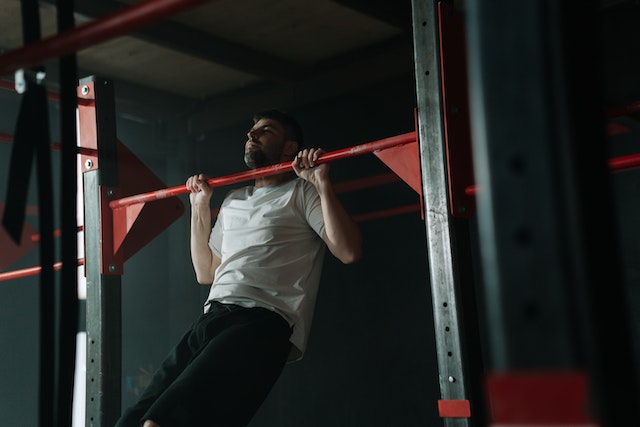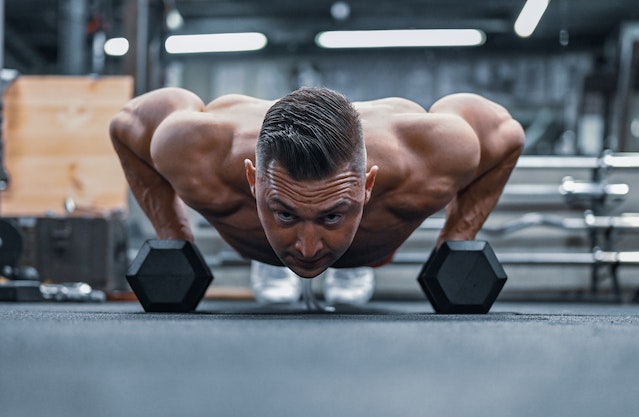Are you looking to impress your friends and show off your mad calisthenics skills? Look no further than the stalder press handstand! This impressive move combines strength, flexibility, and balance to create a truly jaw-dropping feat of athleticism. But don’t let the cool factor fool you – the stalder press handstand is no easy feat. It takes time, dedication, and a lot of hard work to master this skill. But fear not, dear reader, for with the right technique and a bit of patience, you too can learn how to perform this gravity-defying move. In this article, we’ll break down the steps to achieving a stalder press handstand, with plenty of tips, tricks, and humor along the way. So let’s get started, and before you know it, you’ll be wowing crowds with your impressive calisthenics skills.
Prerequisites for stalder handstand press
Before attempting a stalder press handstand, you need to make sure your body is prepared for the physical demands of this skill. Here are some prerequisites to keep in mind:
Strength
The stalder press handstand requires a lot of upper body strength, particularly in the shoulders, triceps, and core. To build the necessary strength, try incorporating exercises such as push-ups, dips, and hollow body holds into your routine. Don’t forget about your legs either – strong legs are essential for stabilizing your body during the press. Squats, lunges, and pistol squats are great exercises to build leg strength.
Flexibility
Flexibility is just as important as strength when it comes to a stalder press handstand. You’ll need a high level of flexibility in your hamstrings, hips, and lower back to achieve the deep pike position required for the press. Some good stretches to work on include forward folds, seated straddle stretches, and pancake stretches. Yoga is also a great way to improve your overall flexibility.
Warm-up
Before attempting a stalder press handstand, it’s important to warm up your body properly to reduce the risk of injury. Start with some light cardio to get your heart rate up, then move on to some dynamic stretches such as arm circles, leg swings, and wrist circles. Next, do some activation exercises for the muscles you’ll be using, such as shoulder rotations and hollow body rocks. Finally, do some skill-specific drills to prepare your body for the movement pattern, such as pike push-ups and tuck-ups. Taking the time to properly warm up will help you perform better and stay safe while practicing the stalder press handstand.
Technique
Learning the technique for the stalder press handstand can be intimidating at first, but breaking it down into smaller parts can make it more manageable. Here is a step-by-step breakdown of the technique:
- Start in a deep pike position, with your legs straight and your hands on the ground in front of you.
- Shift your weight forward onto your hands, engaging your core and pressing your shoulders down towards the ground.
- Slowly begin to lift one leg off the ground, keeping the other leg straight and pressing down through your hands.
- Continue to lift the first leg until it’s above hip height, then begin to lift the other leg off the ground, simultaneously straightening both legs.
- Keep pressing down through your hands and engaging your core as you continue to lift your legs, eventually achieving a full handstand position.
Here are some tips and tricks to make the process easier:
- Practice the pike position separately before attempting the press. Make sure you can achieve a deep pike with your legs straight and your hands on the ground before trying to lift your legs off the ground.
- Use a wall to help you balance. Start by facing a wall and kicking up into a handstand, using the wall for support. Practice lifting one leg off the wall and then the other, eventually working towards a full stalder press handstand away from the wall.
- Focus on engaging your core and pressing down through your hands. This will help you maintain control and balance as you lift your legs off the ground.
- Be patient and practice consistently. The stalder press handstand is a challenging skill that takes time and dedication to master. Don’t get discouraged if it doesn’t come easily – keep practicing and you’ll get there!
Common Mistakes
As with any new skill, there are common mistakes that people make when attempting a stalder press handstand. Here are a few of the most common mistakes and how to correct them:
- Not engaging the core: One of the most important parts of the stalder press handstand is engaging your core muscles. Without a strong core, it’s difficult to maintain control and balance. To correct this mistake, focus on tightening your core muscles as you lift your legs off the ground. You can also incorporate exercises such as planks and hollow body holds to build core strength.
- Not pressing down through the hands: Another common mistake is not pressing down through the hands enough. This can cause you to lose balance and fall out of the handstand. To correct this mistake, focus on pressing your hands firmly into the ground throughout the entire movement. This will help you maintain control and balance.
- Not using the legs to help lift: Sometimes people try to lift their legs using only their upper body strength, which can be very difficult. To correct this mistake, remember to engage your leg muscles and use them to help lift your body. Think about straightening your legs and pressing down through your heels as you lift.
- Rushing the movement: It’s important to take your time and move slowly and intentionally when learning the stalder press handstand. Rushing the movement can cause you to lose control and balance. To correct this mistake, practice moving slowly and focusing on each step of the movement. It’s better to take your time and get it right than to rush and make mistakes.
- Not breathing: Finally, some people forget to breathe when attempting the stalder press handstand. Holding your breath can cause your muscles to tense up and make the movement more difficult. To correct this mistake, remember to breathe deeply and evenly throughout the movement. Inhale as you prepare to lift, and exhale as you press down through your hands and lift your legs.
By avoiding these common mistakes and focusing on the correct technique, you’ll be well on your way to mastering the stalder press handstand.
Stalder handstand press progressions
Building up to a full stalder press handstand takes time and patience. Here are some drills and progressions to help you work towards the full movement:
- Deep Pike Hold: Start by practicing holding a deep pike position with your legs straight and your hands on the ground in front of you. Aim to hold this position for at least 30 seconds, focusing on engaging your core and pressing down through your hands.
- Leg Lifts: Once you can hold the deep pike position, start practicing lifting one leg off the ground at a time. Start with a small lift and work your way up to lifting the leg to hip height.
- Wall Handstand: Using a wall for support, practice kicking up into a handstand and holding it for a few seconds. Focus on pressing down through your hands and engaging your core.
- Stalder Press Negative: From the wall handstand position, slowly lower one leg towards the ground while keeping the other leg straight and lifted. Once the first leg touches the ground, slowly lower the second leg to the ground. Repeat for several reps, focusing on maintaining control and balance throughout the movement.
- Stalder Press with Spotter: Work with a spotter who can assist you in lifting your legs off the ground and into the full stalder press handstand position. As you become more comfortable with the movement, rely less on the spotter for assistance.
Here are some tips and helpful cues to keep in mind:
- For the deep pike hold, focus on keeping your legs straight and your hands pressed firmly into the ground. Imagine reaching your hips up towards the ceiling to deepen the stretch.
- When practicing leg lifts, focus on engaging your core and pressing down through your hands to maintain balance.
- In the wall handstand, focus on keeping your body in a straight line from your hands to your feet. Avoid arching your back or collapsing in the shoulders.
- During the stalder press negative, focus on maintaining control and lowering your legs slowly and with control. Avoid rushing the movement or letting your legs drop to the ground.
- When working with a spotter, communicate clearly and ask for only as much assistance as you need. Focus on using your own strength to lift your legs as much as possible.
By incorporating these drills and progressions into your training, you’ll be well on your way to mastering the stalder press handstand. Remember to take your time and be patient – this is a challenging skill that takes time and dedication to master.
Troubleshooting
Even with proper technique and plenty of practice, there are common issues that people may encounter when trying to learn the stalder press handstand. Here are some common issues and how to troubleshoot them:
- Lack of Core Strength: One of the most common issues when attempting a stalder press handstand is a lack of core strength. To troubleshoot this issue, focus on building your core strength through exercises like plank holds, hollow holds, and leg lifts.
- Limited Shoulder Flexibility: Limited shoulder flexibility can make it difficult to maintain proper positioning during the movement. To troubleshoot this issue, incorporate shoulder stretches and mobility exercises into your warm-up routine.
- Inability to Lift Legs: If you’re having trouble lifting your legs off the ground, try incorporating drills like leg lifts or pike holds to build the necessary strength and flexibility.
- Falling Forward: Falling forward is a common issue when attempting a stalder press handstand. To troubleshoot this issue, focus on maintaining proper body positioning and engaging your core throughout the movement. Additionally, try to kick up into the movement with more power to help maintain balance.
- Collapsing at the Bottom: Some people may find that they collapse at the bottom of the movement, making it difficult to lift their legs up into the handstand position. To troubleshoot this issue, focus on maintaining proper body positioning and engaging your core throughout the movement. Additionally, try to work on your pike hold and leg lifts to build the necessary strength.
Remember that mastering the stalder press handstand takes time and practice. Be patient with yourself and don’t get discouraged if you encounter issues along the way. With dedication and perseverance, you can overcome these challenges and achieve success in your training.
Final thoughts
The stalder press handstand is a challenging yet impressive skill to master in calisthenics. By focusing on the prerequisites, proper technique, common mistakes to avoid, drills and progressions, and troubleshooting issues, you can learn to perform this skill with precision and control. Remember that progress takes time and practice, so be patient and consistent with your training. With dedication and perseverance, you can achieve your goal of performing a stalder press handstand and take your calisthenics practice to the next level. So, get ready to put in the hard work and have fun along the way!
